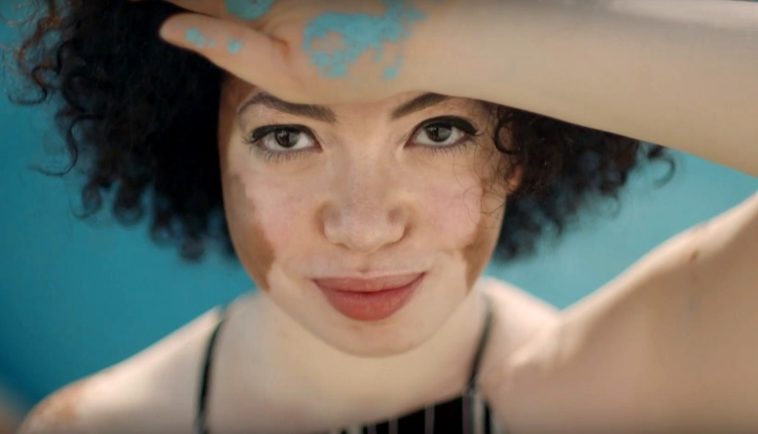Gillette Venus has recently rolled out its My Skin, My Way campaign, showcasing skin diversity. The campaign features Bianca Rosemarie, a model with vitiligo, in all her glory. The latest advertisement from the campaign is a departure from the women featured in Venus ads when the razor was first introduced in 2000. By including vitiligo in the ad, Gillette demonstrated an incredible commitment to diversity in their models. The move by Gillette is in line with changing depictions of women throughout the media, beauty and fashion world.
The vitiligo community has applauded the brand for including women with vitiligo who aren’t often featured in major ad campaigns. “With campaigns like this, the advertising industry is slowly inching its way toward better inclusivity. These lovely models are not only seen shaving their unwanted hair but representing a group of people who are underrepresented in the media. This is inclusivity in every single sense of the word,” Alice, a 23-year-old vitiligo fighter from London wrote to us via email.
Over the years, all brand campaigns have shown only one version of the beautiful skin. However, in recent years, many brands have joined the body positivity movement. Diesel’s high-energy campaign and CoverGirl’s TruBlend foundation have represented vitiligo in their brand campaigns one way or another. These campaigns have shown how women’s self-image can be affected by what society has deemed “beautiful.” With its latest campaign, Gillette Venus is too hitting refresh by devoting itself to representation through a new lens.
We hope other brands will follow Gillette Venus footsteps to normalize vitiligo. This way, we will have brand campaigns more inclusive and representative of the world we live in. Living with vitiligo can be overwhelming. But, more brand campiagns like this can make every single person living with vitiligo feel comfortable in their own skin.

